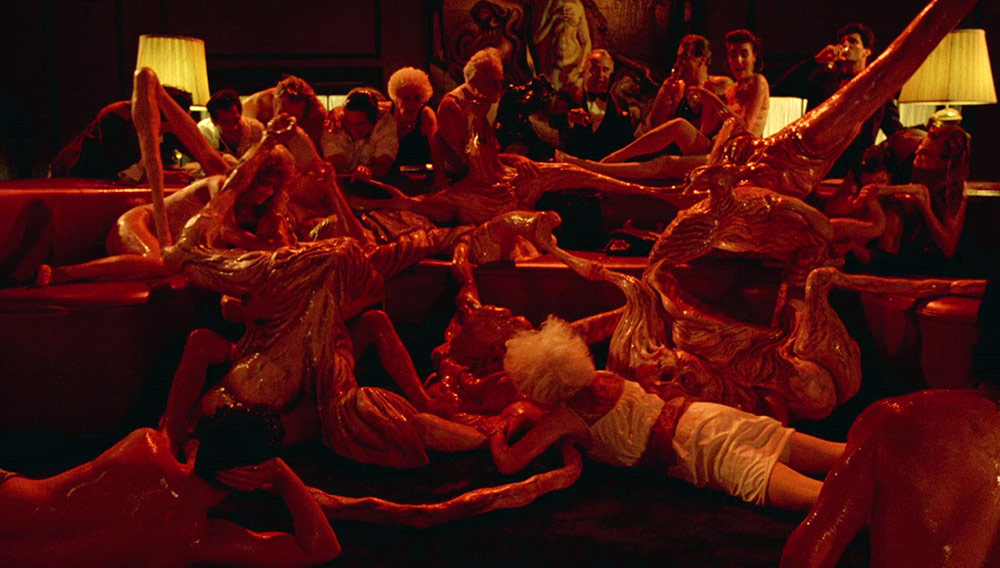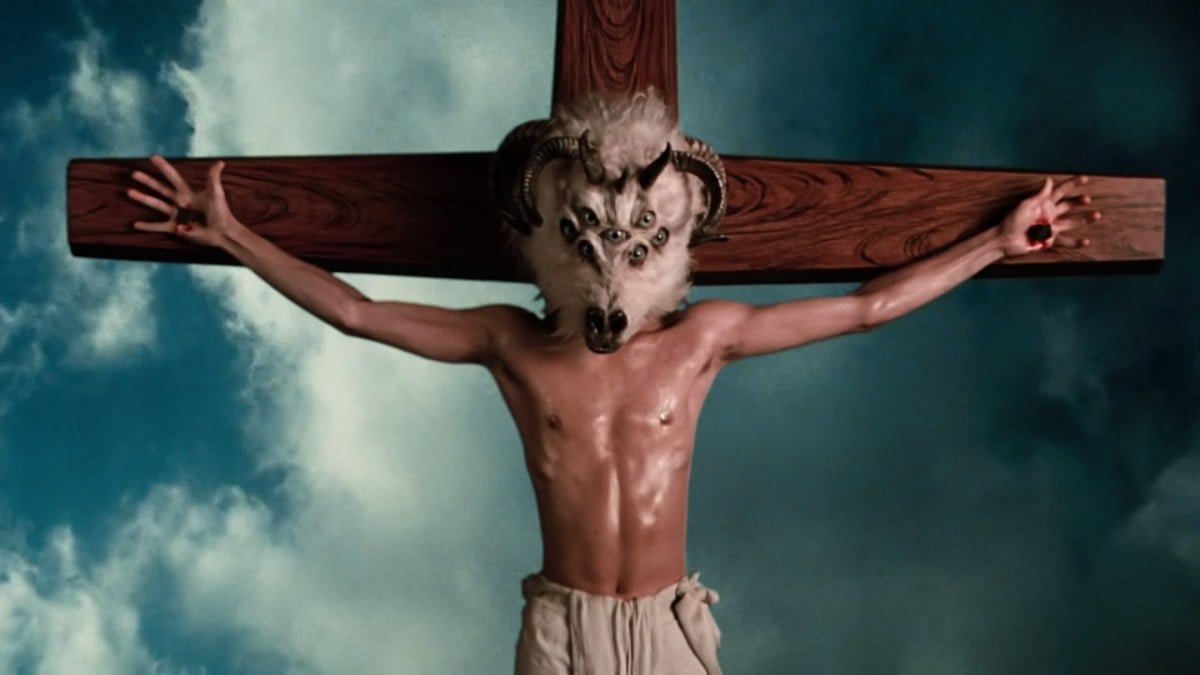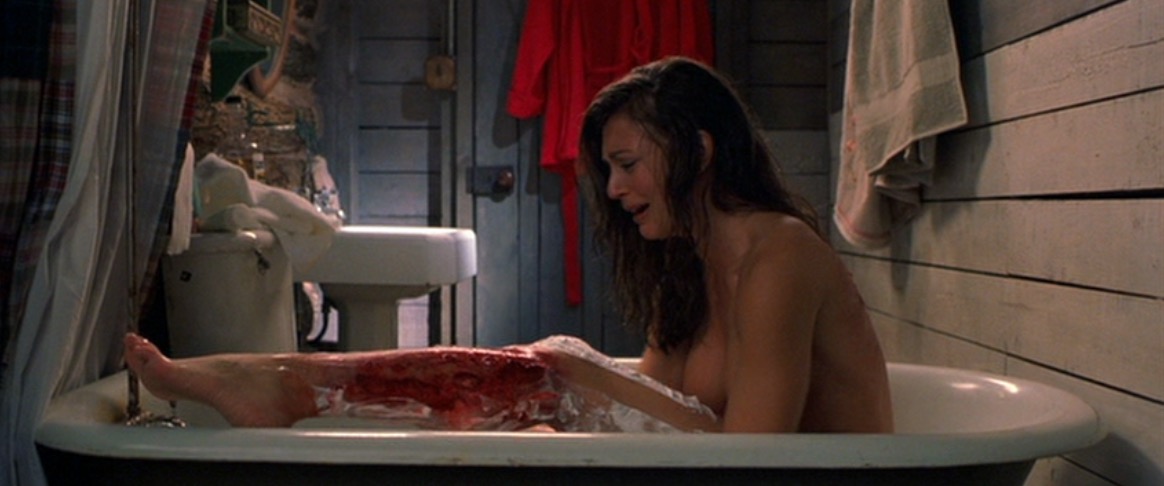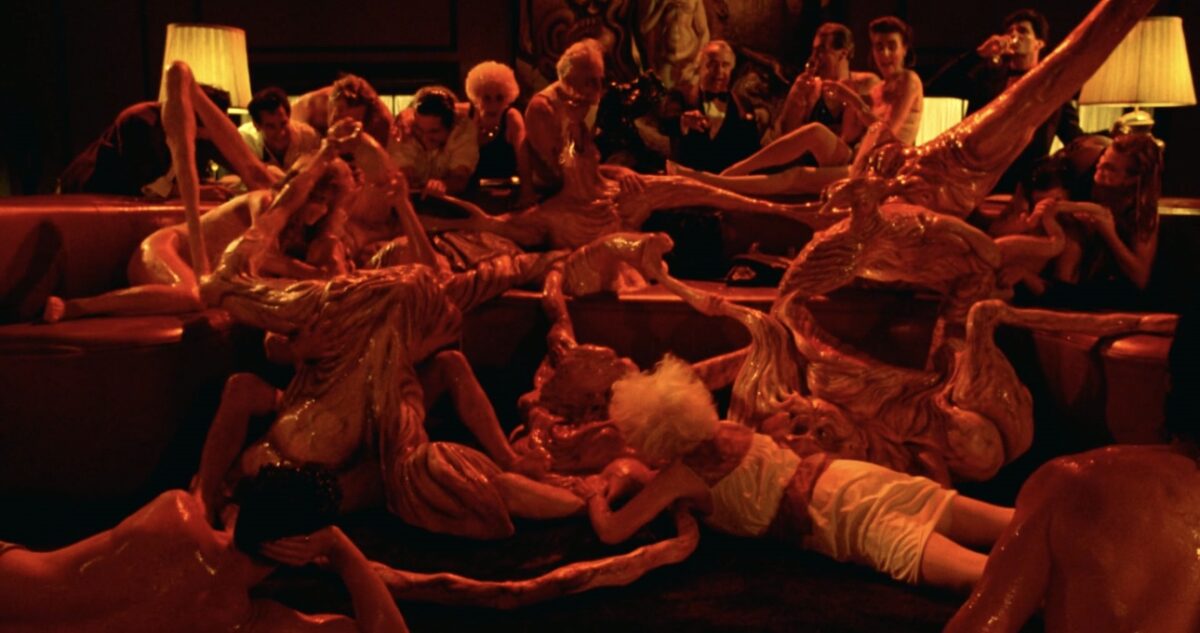
1- The Wolf House (Cristobal León and Joaquin Cociña, 2018)
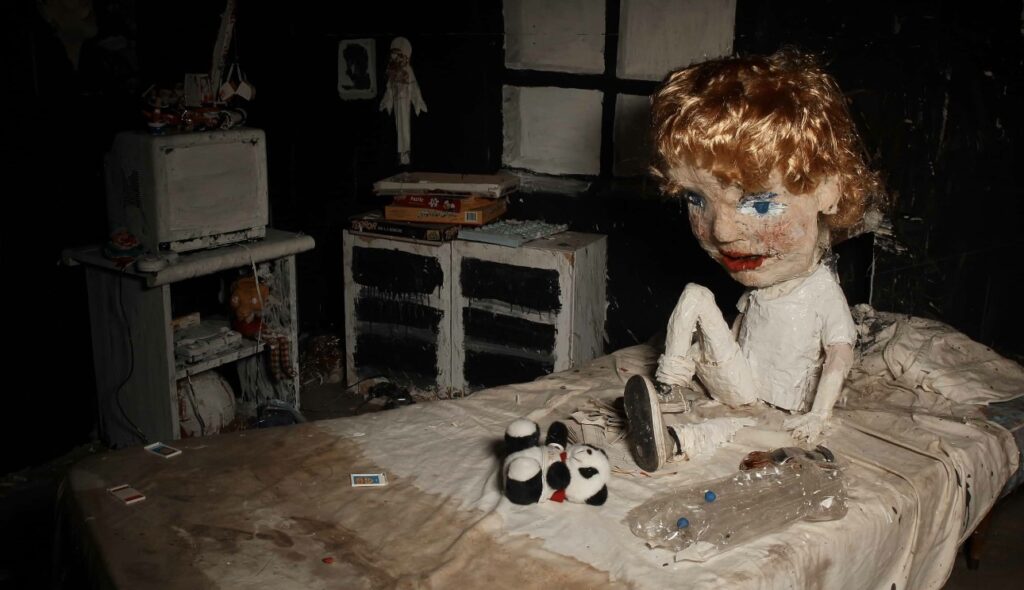
Kicking off this mind-twisting list is the Chilean stop-motion film The Wolf House. Directed by Cristobal León and Joaquin Cociña and co-written by Alejandra Moffat, is the animated, surreal fairytale that takes the viewer through a mirage of labyrinth-like settings and worlds in a desolate house. The film’s visual incoherence is a guise that shelters and replicates the intense and complex meaning behind the story—inspired by the troubling Colonia Dignidad, a colony established in Chile post WW2 where various acts of torture were committed. The Wolf House’s myriad of madness is captivatingly gruesome, with each scene being near impossible to decode at first glance; for instance, as the meaning behind the house unravels within the story, the bones of its foundations experience a metamorphosis where objects become people and people become animals.
2- Possum (Matthew Holness, 2018)

Akin to the backwards world of British TV series The League of Gentlemen (1999-2002) and infused with a touch of Ben Wheatley’s Neo-folk filmmaking style is the utterly fantastic and incredibly dark Possum. From the mind of director Matthew Holness is the story of a child puppeteer, Philip (Sean Harris), who returns home where he is confronted with his past trauma. The film was adapted from Holness’s short story of the same name that was influenced by the works of Sigmund Freud. Considering this, Possum is brimming with the uncanny, whether that be through the offensively disturbed arachnid puppet that features throughout, or the cold, dismal world that the film takes place in. Possum is one of those films that may be watched a dozen times before one can truly get to grips with every single detail of great emotional significance that seeps throughout every frame.
3- House (Nobuhiko Obayashi, 1977)
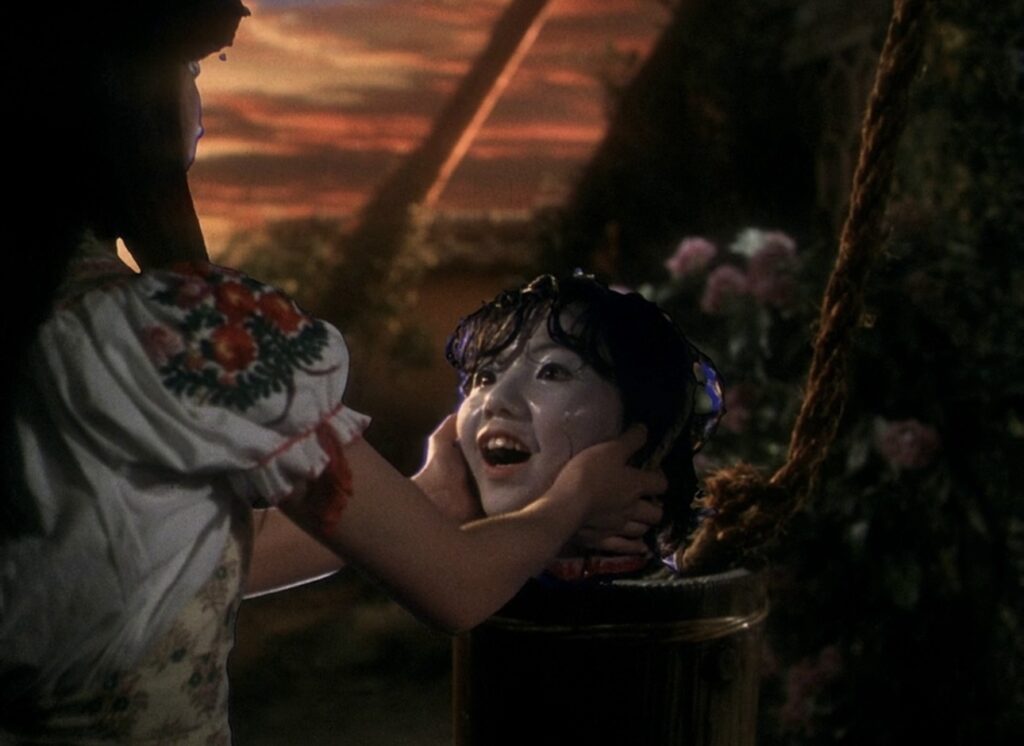
House is a kaleidoscopic fever dream that emulates psychedelia with a pungent extremity, with its ethereal quality coming off as both haunting and unreasonably excessive. The hallucinatory facets within House derive from director Nobuhiko Obayashi’s wanting to create a film that goes beyond human understanding, or more accurately, adults’ understanding of the logical world. In creating the script, Obayashi enlisted his daughter’s help where he observed that a child’s imagination conjures the most fascinating of concepts that traverses far beyond the mundanity of what the mature mind summons. With this, House takes aspects of childhood nightmares of colourful monsters and nonsensical scenarios to create a film that is wildly ambitious and genuinely startling.
4- Begotten (E. Elias Merhige, 1989)
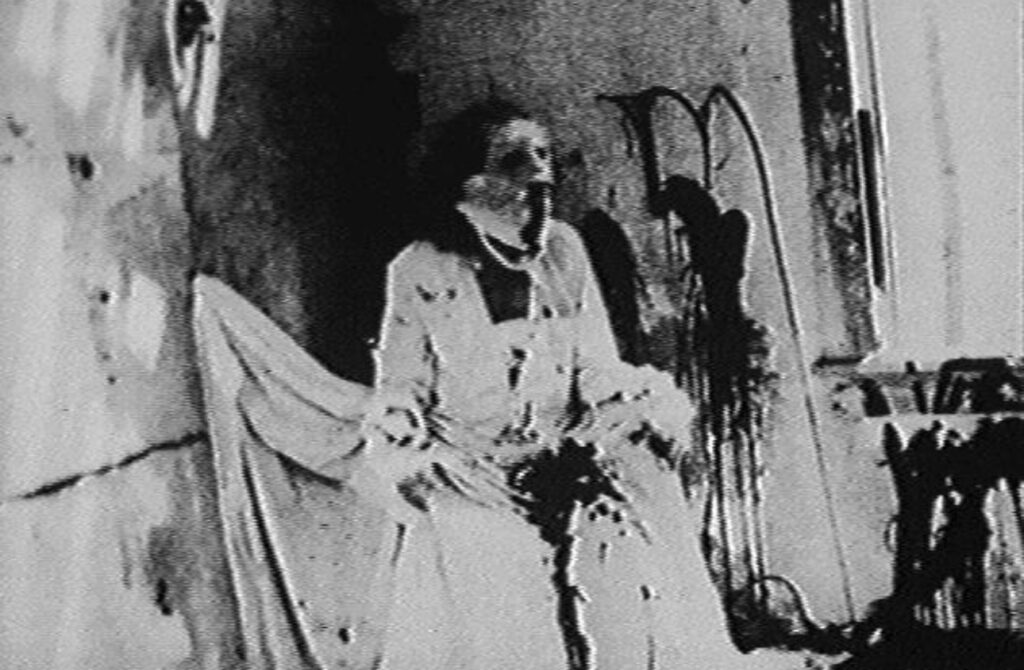
Back in the mid 1980s E. Elias Merhige developed an idea for a piece of experimental theatre where live music and dance would be performed against a story of mythology, religion and the disgrace of humanity. Whilst traction was aligned with the project and the concept blossomed, Merhige realised that the production as a live piece of theatre would be too costly, leading to his concept becoming a film. With the knowledge that Begotten’s corpus derived from experimental theatre, it becomes easier to mentally digest the final product, which is by all intents and purposes a complete deluge that resembles a total exodus of reality. The hellish imagery consists of the self-disembowelment of God whose mutilated remains gives birth to Mother Earth before conceiving the ‘Son of Earth’ and going on a surreal, nauseating path of destruction and discovery. Take this rambunctious idea and now imagine it paired with the film’s obtrusive score that runs throughout which features nothing but insect-like squirming noises over a ‘thu-dum’ heartbeat sound. Begotten obliterates normality and acts a sporadic experience from beginning to end.
5- Koko-di Koko-da (Johannes Nyholm, 2019)
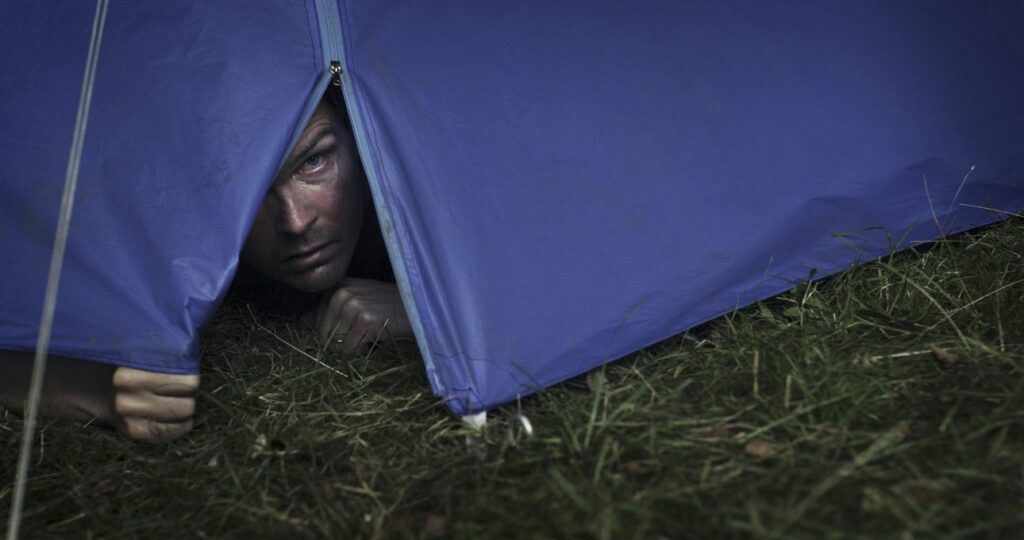
Koko-di Koko-da is another Groundhog Day story that chronicles a grieving couple that are stuck in a time loop by nursery rhyme characters. The complex and structurally intricate storyline deliberately never makes sense or fully acknowledges its strangeness, it is just accepted by the cinematic universe, making every confused and disjointed emotion extracted from the viewers all the more disturbing. Paired with the absurdity of the events, there is an overall aggravation towards the antagonising characters. The beings terrorising the couple strive through with a morbid happiness that seems whimsical until we are reminded that this is very much a horrific story.
6- Uzumaki (Higuchinsky, 2000)

Based on the Junji Ito manga of the same name is Uzumaki, a film where atmosphere, aura and an unhinged narrative take over to create a boggling adaption. Uzumaki has received a decent share of criticism over time, partially due to its off-kilter humour that sporadically features throughout, which seems quite out of place. However, it is this strange placement of slapstick comedy that pierces the tension and makes the film an untamed watch where the entire direction of the film is consistently unprecedented. Adding to the peculiarity is the film’s central focus surrounding the spiral pattern and how it essentially drives the characters to the brinks of their psyche. The Fibonacci spiral hysteria twists and turns the story in the most unexpected of ways, leaving for the most memorable of watches.
7- Society (Brian Yuzna, 1989)
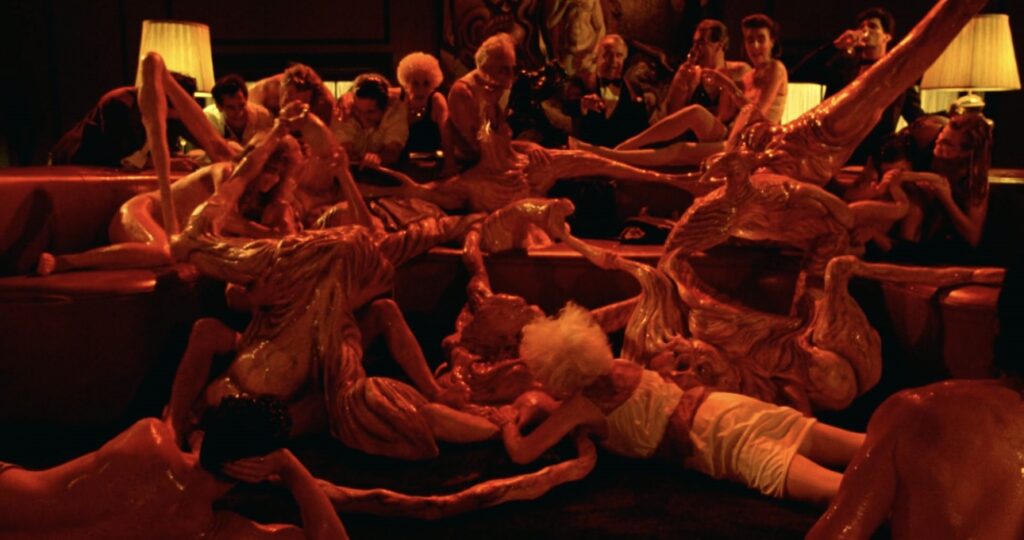
The magnificence of body horror is forever in debt to Brian Yuzna’s Society. Yuzna’s epic exploration into the potentials of depravity is an exercise in the brilliance of cinema that doesn’t take itself too seriously, with plenty of amalgamated bodies that fuse flesh to flesh and limb to limb to create a gigantic creature formed by body parts. The aspect of anthropomorphism plays a large role in Society with the monstrosity of the final act being a repulsive feast for the senses. For fans of excessive gore and stomach churning terror, this film is not to be missed!
8- Resurrection (Andrew Semans, 2022)

Despite the brilliance of the leads, Rebecca Hall and Tim Roth, Andrew Semans Resurrection is criminally underrated. Whilst many absurd films tackle obscene comedy to further the surreal nightmarish quality of mind-boggling horror, Resurrection takes a much more gloom-ridden route where the calamitous nature of the film shines alongside the unearthly and bizarre plot points. Whilst the story is best left as an enigma for first time watchers, what can be revealed is that Resurrection follows the disciplined business woman Maggie (Hall), whose life implodes when a strange figure (Roth) from her past comes back to haunt her. The words brutal and cold rings strong throughout this relentless shocker.
9- Visitor Q (Takashi Miike, 2001)
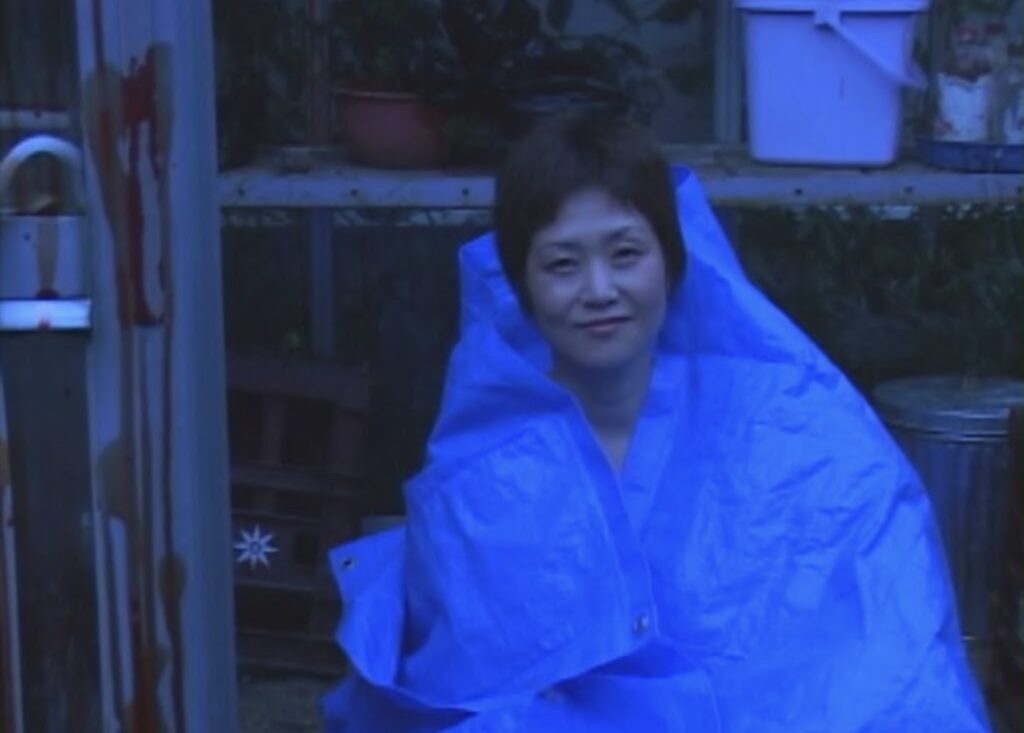
Hmm… where to begin with horror legend Takashi Miike’s Visitor Q? Not for the faint hearted and certainly not a family film is this utterly barbaric and gut-wrenchingly twisted tale of nihilistic dread following the perverted Yamazaki family as they fall apart at the hands of their own lewdness. Themes of incest, voyeurism, sadio-masochism, torture, necrophilia, coprophilia, lactophilia (and copius other ‘philia’ related terms) all take centre stage throughout the film, leaving any seasoned viewer affected, let alone an unsuspecting spectator. However, whilst there is a lot to be said about its extremity, Visitor Q is a fascinating watch, particularly due to its stylistic output. The film mimics documentary footage with the camera acting as a fly on the wall for most scenes, creeping up where you’d least expect it and bringing us uncomfortably close to the experimental action.
10- The Cabinet of Dr. Caligari (Robert Wiene, 1920)
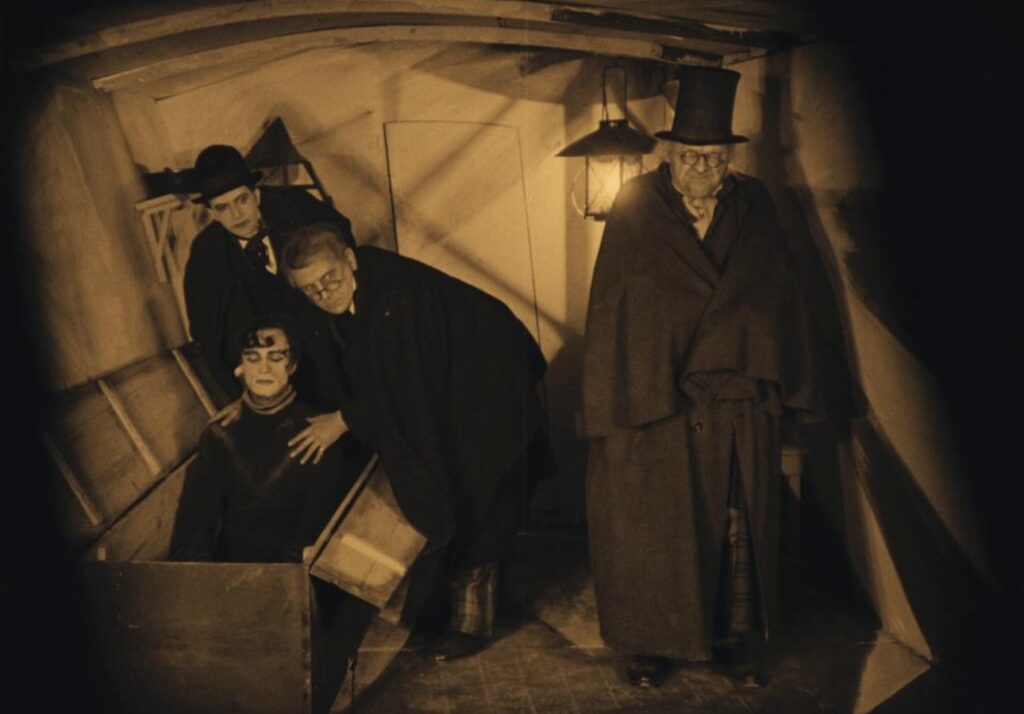
German expressionism roots its origins within Berlin circa 1920s as a reflection of the turmoil during that era. Notable films from the period include the likes of Nosferatu (1922), Faust (1926) and most importantly in this case, Robert Wiene’s The Cabinet of Dr. Caligari. The film is renowned for its graphic style and striking aura that is straight from the dark underbelly of horror thematics. The set’s were purposefully built to create a dizzying effect where the walls were angled and floors were tilted, where featured trees would appear diagonal and staircases would be spiralized messes. It was a radical decision to portray such a frenzy that still pays off over 100 years later.
Want more top horror lists and reviews? Check out our blog here..




